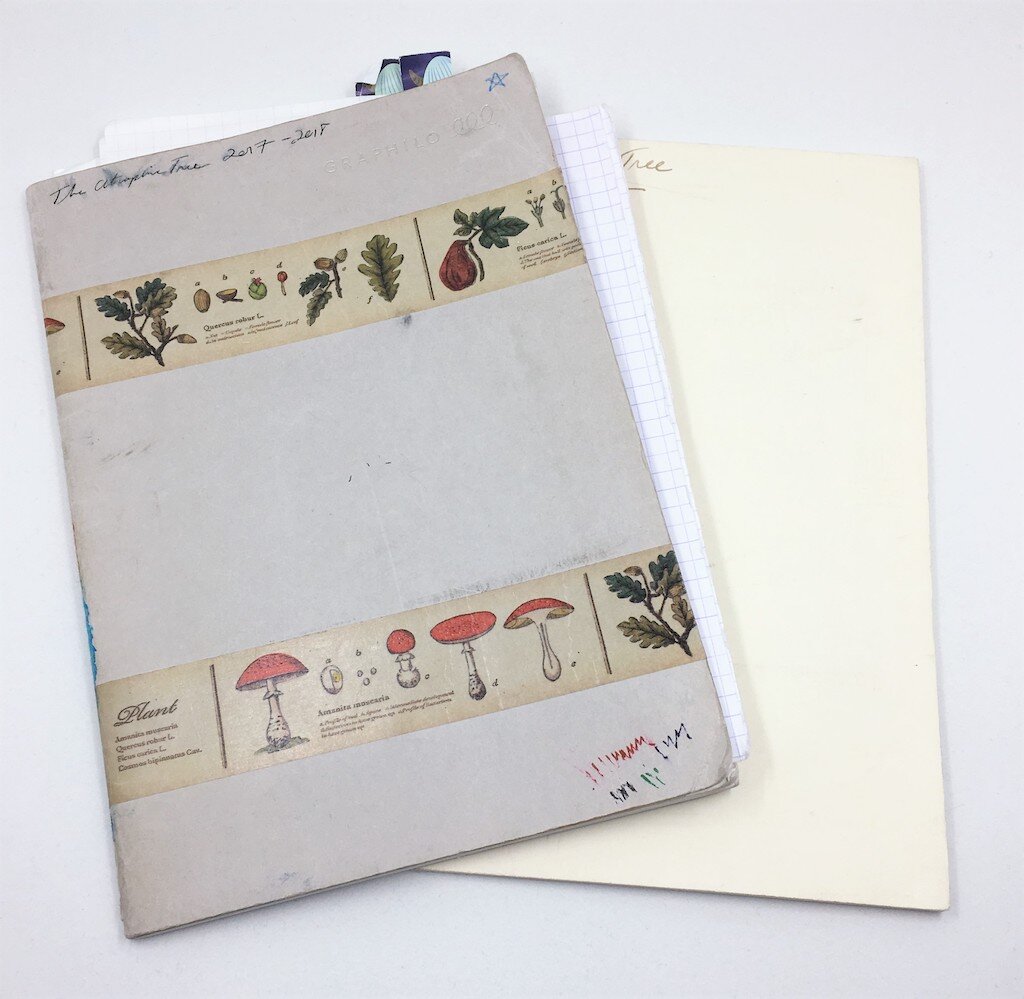(Sarah Read is an author, editor, yarn artist, and pen/paper/ink addict. You can find more about her at her website and on Twitter. And check out her latest book, Out of Water, now available where books are sold!)
It's that time of year again, but this time it's totally different. School supply shopping--stationery Christmas--has gone weird, like everything else. But even though our education has gone virtual, the act of study, of learning, has not. It's still a very tactile thing, and analog supplies are maybe more important than ever. I learn by writing, so even if I'm parked in front of a computer for class, I need to be writing the material down. I still need writing instruments (I have a few) and notebooks (check), and I need a system to keep them organized.
I'm writing this in the middle of my grad school orientation week, which my university has affectionately dubbed "bootcamp" to prepare us for the intellectual equivalent of an obstacle course designed to find our weaknesses and limitations. So that we can improve them, of course--not out of cruelty. While the effect might be the same, intent matters, in this case. It's also my first foray into online classes, as the event was moved to a virtual platform due to the pandemic. My courses themselves were always going to be online, so it's actually serving as excellent practice for navigating that format--and for testing out my assembled supplies to see if they will work for online learning.
I had joked, when I first enrolled in grad school, that I wanted a travelers-notebook-style setup that would hold my hobonichi cousin plus five A5 notebooks with decent page counts. It was only a half-joke, though, because while that sort of thing sounded a bit ridiculous, I really did want one! Well, I found one. On Etsy, of course. The maker is DianoD, a leatherworker who I believe is located in Russia (their shop is currently on vacation, so not all details are visible). They make a variety of goods, including the beast I decided to order for my school needs.
I ordered the A5 extra wide cover with all the extra bells and whistles. It has a pen holder on the snap strap, another pen loop inside, two back pockets, an insert flap for my planner, five widely spaced elastic bands for notebook inserts, another slip flap for papers, a zipper pouch, three card slots, and on the folding piece there is a phone pocket on one side and a snap pocket and smaller pocket on the outside.
The leather is smooth but rigid, so it holds the contents firmly in place, and the snap closure has two positions, so it can be closed tightly, or let out a little bit if (when) it gets overstuffed.
It is a beast, when full. It dosn't fit in a purse, though it works in a tote bag or backpack. I was surprised to find that I can actually write in the notebooks while they're still in the cover, but I prefer to take them out for longer notetaking sessions, and then put them back when I'm done. I have one notebook for a commonplace book, one that I am using for all the information I need about school, a notebook for each of my two classes, and a notebook for my writing ideas. My Hobonichi is behind all of those. I keep a fountain pen in the strap pen pouch, and a mechanical pencil in the inside pen loop. I have blank notecards, business cards, and a very small pocket notebook in the card slots, and sticky notes in the snap pouch. I use the back pockets for planner items, like my ill-fated concert tickets. I keep work papers in the front pockets. It really is the most complete system I've used, and so far it's working really well for me.
Its weak point is, I think, the snap closure. The snap is a fairly standard craft snap notion, and it doesn't match the sturdiness of the rest of the construction. It works great now, but it feels like something I'm going to break, eventually. The rest of it feels like it will outlive me. All of the snap pieces are accessible, though, so I think it would be a fairly simple matter to replace them, if they do get bent or worn out.
I paid $165 (including shipping from Russia) for this, making it the most expensive Trapper Keeper I've ever owned. I do not regret it.
There is some irony here, considering that what I'm studying is the organization of information (how, why, where, when, how much, and by whom). I wonder if I can do a thesis on notebook systems.
Enjoy reading The Pen Addict? Then consider becoming a member to receive additional weekly content, giveaways, and discounts in The Pen Addict shop. Plus, you support me and the site directly, for which I am very grateful.
Membership starts at just $5/month, with a discounted annual option available. To find out more about membership click here and join us!


















